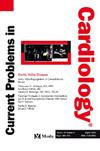睡眠呼吸暂停是一种常见而危险的心血管风险因素。
摘要
全世界有近十亿人患有睡眠呼吸暂停,其中包括四千万美国人。医学界最关注的问题是,由于肥胖、缺乏运动和糖尿病的流行,睡眠呼吸暂停的发病率正在显著增加,而这些都是导致睡眠呼吸暂停发生和持续存在的重要危险因素。睡眠呼吸暂停的特点是在睡眠过程中多次发生呼吸暂停或低通气,导致夜间唤醒、夜间喘息、白天嗜睡、易怒、健忘、疲劳和反复头痛。阻塞性睡眠呼吸暂停是指睡眠时上气道阻塞,在胸肌和膈肌持续活动的情况下气流消失或明显减少。中枢性睡眠呼吸暂停是指在睡眠过程中,由于髓质呼吸中枢对吸气胸肌和膈肌神经的刺激消失,以及这些肌肉在呼吸暂停时没有收缩,导致鼻-口气流缺失或明显减少。当一个人同时表现出阻塞性和中枢性睡眠呼吸暂停的特征时,就会出现复杂性睡眠呼吸暂停。睡眠呼吸暂停的严重程度通过多导睡眠图和呼吸暂停低通气指数(AHI)来测量,后者是多导睡眠图测量的每小时睡眠中呼吸暂停和低通气的平均次数。如果 AHI 为每小时 5-14 次,且无症状或症状轻微,则为轻度睡眠呼吸暂停;如果 AHI 为每小时 15-30 次,且偶有白天嗜睡,则为中度睡眠呼吸暂停;如果 AHI 超过每小时 30 次,且白天经常嗜睡,影响正常的日常生活活动,则为重度睡眠呼吸暂停。长期睡眠呼吸暂停和低通气,继而出现代偿性高通气,会对心血管造成严重的不良后果,包括1)反复低氧血症和高碳酸血症;2)交感神经活动增加,副交感神经活动减少;3)氧化应激和血管内皮功能障碍;4)心脏重塑和心血管疾病。中度或重度睡眠呼吸暂停会显著增加冠心病、充血性心力衰竭、脑血管事件(中风)和心律失常的风险,并增加这些疾病的发病率和死亡率。然而,由于在预测和检测睡眠呼吸暂停方面存在挑战,且缺乏明确的最佳治疗指南,目前许多人对睡眠呼吸暂停的诊断不足且未得到治疗。对睡眠呼吸暂停患者来说,在 70% 以上的夜晚,每晚持续≥4 小时的慢性气道正压治疗是有益的。CPAP 可改善睡眠质量,降低 AHI,增加心输出量,增加大脑和心脏的供氧量,降低抵抗性高血压,减少心律失常,减少白天嗜睡。本文将讨论阻塞性睡眠呼吸暂停、中枢性睡眠呼吸暂停和复杂性呼吸暂停的诊断。随后,回顾了睡眠呼吸暂停的重要病理生理机制以及这些病理生理机制与动脉粥样硬化性血管疾病的关系。为了降低睡眠呼吸暂停导致的心血管疾病发病率和死亡率,促进睡眠呼吸暂停患者的诊断和长期有效的治疗,心血管专家、肺病专家和呼吸治疗/康复专家必须密切合作。Sleep apnea involves almost one billion individuals throughout the world, including 40 million Americans. Of major medical concern is the fact that the prevalence of sleep apnea is significantly increasing due to the epidemic of obesity, physical inactivity, and diabetes mellitus which are important risk factors for the development and persistence of sleep apnea in individuals. Sleep apnea is characterized by multiple episodes of apnea or hypopnea during sleep, which cause nocturnal arousals, gasping for breath during the night, daytime sleepiness, irritability, forgetfulness, fatigue and recurrent headaches. Obstructive sleep apnea occurs when upper airway obstruction occurs in an individual during sleep with absent or markedly reduced airflow in the presence of continued activity of inspiratory thoracic and diaphragmatic muscles. Central sleep apnea is defined as the absence or the significant reduction of naso-oral airflow due to the withdrawal during sleep of ponto-medullary respiratory center stimulation of the nerves of the inspiratory thoracic and diaphragmatic muscles and absence of contraction of these muscles during apnea. Complex sleep apnea occurs when an individual exhibits characteristics of both obstructive and central sleep apnea. The severity of sleep apnea is measured by polysomnography and the apnea hypopnea index (AHI), which is the average number of apneas and hypopneas per hour of sleep measured by polysomnography. Sleep apnea is mild if the AHI is 5-14/hour with no or mild symptoms, moderate if the AHI is 15 to 30/hour with occasional daytime sleepiness, and severe if the AHI is >30/hour with frequent daytime sleepiness that interferes with the normal activities of daily life. Chronic sleep apneas and hypopneas followed by compensatory hyperpneas are associated with significant adverse cardiovascular consequences including: 1) recurrent hypoxemia and hypercarbia; 2) Increased sympathetic nerve activity and decreased parasympathetic nerve activity; 3) oxidative stress and vascular endothelial dysfunction; and 4) cardiac remodeling and cardiovascular disease. Moderate or severe sleep apnea significantly increases the risk of coronary artery disease, congestive heart failure, cerebral vascular events (strokes), and cardiac dysrhythmias, and also increase the morbidity and mortality of these diseases. Nevertheless, sleep apnea is currently underdiagnosed and untreated in many individuals due to the challenges in the prediction and detection of sleep apnea and a lack of well-defined optimal treatment guidelines. Chronic continuous positive airway pressure for ≥4 hours/night for >70% of nights is beneficial in the treatment of patients with sleep apnea. CPAP Improves sleep quality, reduces the AHI, augments cardiac output and increases oxygen delivery to brain and heart, reduces resistant hypertension, decreases cardiac dysrhythmias, and reduces daytime sleepiness. The present article discusses the diagnosis of obstructive sleep apnea, central sleep apnea, and complex apnea. Thereafter the important pathophysiologic mechanisms in sleep apnea and the relationship of these pathophysiologic mechanics to atherosclerotic vascular disease are reviewed. Guidelines are then provided for the treatment of mild, moderate and severe sleep apnea In order to reduce the cardiovascular morbidity and mortality caused by sleep apnea and facilitate the diagnosis and the long-term, effective treatment of sleep apnea in patients, the close cooperation is necessary of cardiovascular specialists, pulmonary specialists, and respiratory therapy/ rehabilitation specialists.

 求助内容:
求助内容: 应助结果提醒方式:
应助结果提醒方式:


